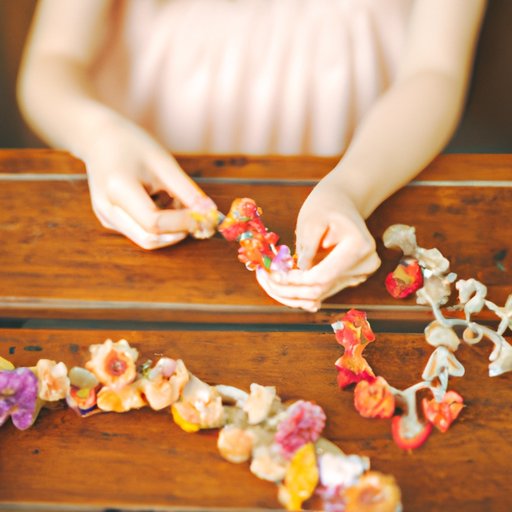Introduction
Drying flowers is a timeless activity that has been enjoyed by generations. Preserving the beauty and fragrance of flowers is not only a creative endeavor but also a practical use of nature’s bounty. Whether you want to keep a special bouquet, create a sentimental keepsake, or simply enjoy the beauty of flowers all year round, drying flowers is an easy and enjoyable process.
In this article, we will provide a step-by-step guide on how to dry flowers, including different types of flowers and the best ways to preserve them. We will also highlight natural methods for flower preservation, crafting ideas, seasonal tips, and decorative uses for dried flowers.
Step-by-Step Guide
The first step in drying flowers is selecting the right type of flower. Different flowers dry better than others. The best choices include roses, lavender, hydrangea, and baby’s breath. Once you’ve picked your flowers, you’ll need to remove any excess stems or leaves and place them on a drying rack. Make sure to keep the flowers spaced out so they don’t touch each other.
Next, choose a dry location with good air circulation. Drying rooms should be around 70 degrees Fahrenheit with low humidity to prevent mold and mildew. After about two weeks, the flowers should be dry and ready for use. Store them in a sealed container until you are ready to use them.
Types of Flowers
Different flowers require different methods of drying. Some flowers may require a different approach to prevent damage during the drying process. Here are some popular flowers and the best ways to dry them:
- Roses: best dried by hanging them upside down in a cool, dry area.
- Lavender: best dried by loosely bundling the flowers together and hanging them upside down.
- Hydrangea: best dried by placing them in a vase with about an inch of water and allowing the water to evaporate naturally.
- Baby’s Breath: best dried by hanging them upside down in a cool, dry area.
Natural Options
If you prefer using natural methods for flower preservation, consider hang drying, which is the simplest and most common method. Another popular option is using silica gel, which involves placing the flowers into a container filled with silica gel to absorb the moisture. Pressing flowers is another natural method that creates flat, preserved flowers that can be used for scrapbooking, framing, or other craft projects.
Crafting with Dried Flowers
Dried flowers are perfect for crafting, and there are many creative ways to use them. Here are some ideas:
- Wreaths: arrange dried flowers on a wire wreath frame and secure with floral wire or hot glue.
- Potpourri: mix dried flowers with essential oils, spices, and fixatives for a fragrant combination.
- Floral Arrangements: fill a vase with dried flowers and add accents like feathers, ribbons, or dried berries.
Seasonal Tips
Drying flowers during their peak season is a great way to ensure that the blooms are of the highest quality. Here are some seasonal tips:
- Spring: Tulips, daffodils, and lilacs can be dried by hanging them upside down.
- Summer: Sunflowers, zinnias, and marigolds can be dried by placing them in a vase with an inch of water and allowing water to evaporate naturally.
- Fall: Chrysanthemums, dahlias, and hydrangeas can be dried by hanging them upside down in a cool, dark location.
Decorating with Dried Flowers
Dried flowers also make unique and charming additions to any home decor. Here are some decorative ideas:
- Picture Frames: press flowers between pieces of wax paper and place them in a picture frame.
- Centerpieces: arrange dried flowers in a decorative vase and fill in spaces with feathers, twigs, or other accents.
- Room Accents: place dried flowers in bowls or baskets to add a touch of nature to any room.
Conclusion
Drying flowers is an easy and enjoyable process that provides a wealth of creative possibilities. By following the steps outlined above, you can create beautiful, long-lasting dried flowers that are not only aesthetically pleasing but also environmentally friendly. Whether you’re crafting with dried flowers or incorporating them into your home decor, they provide a unique and charming touch that will delight your senses.
So go ahead and try out the different drying methods, crafting ideas, and seasonal tips provided in this article.
